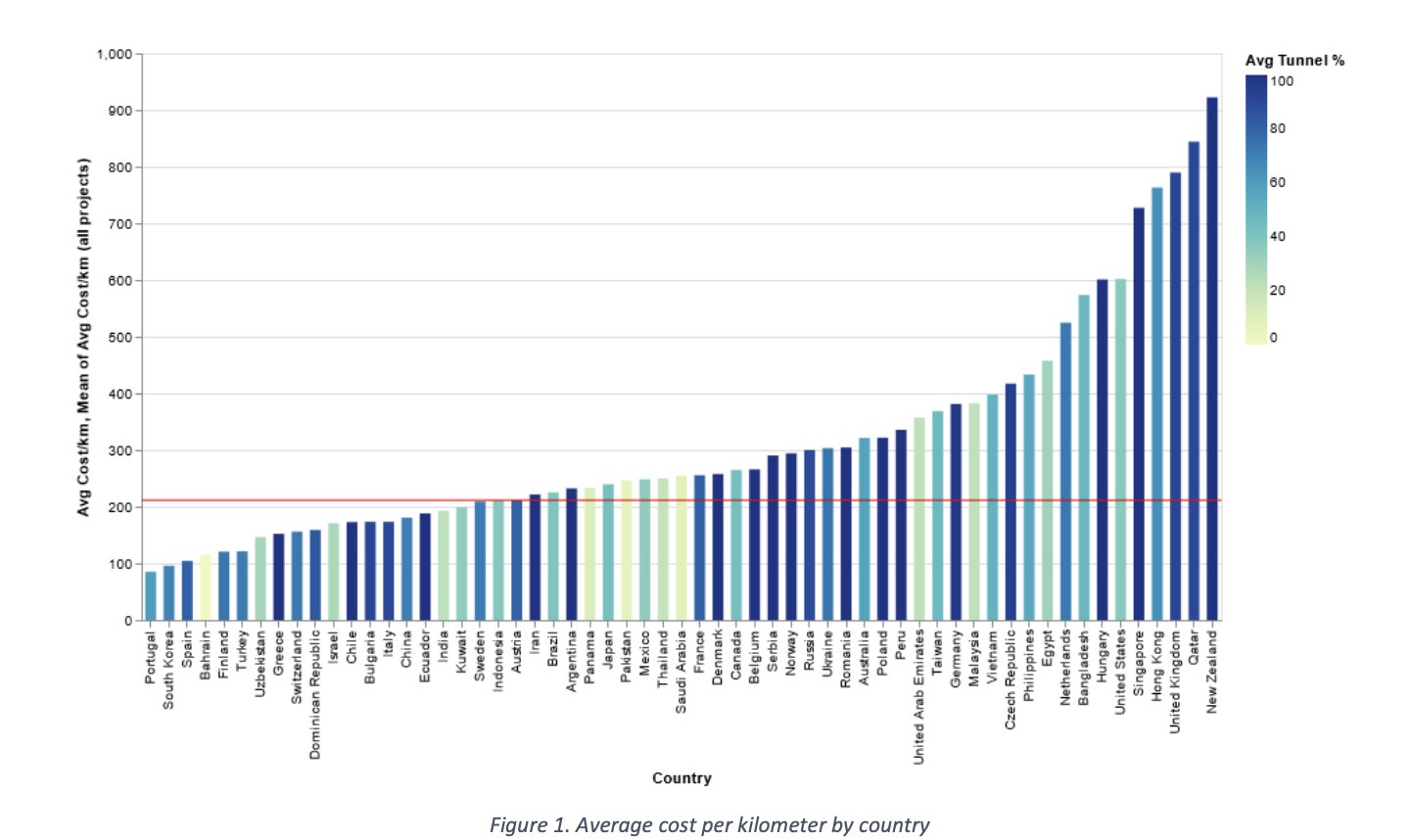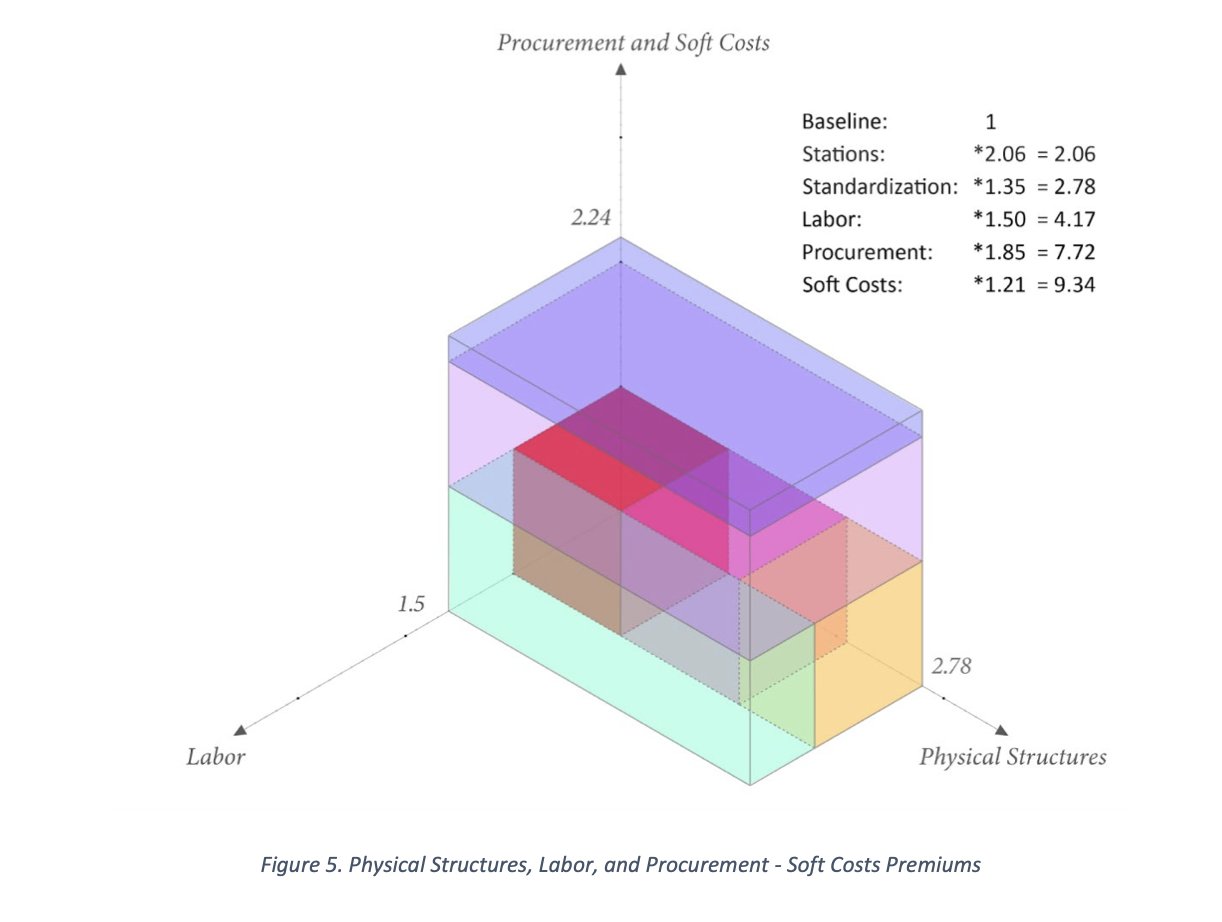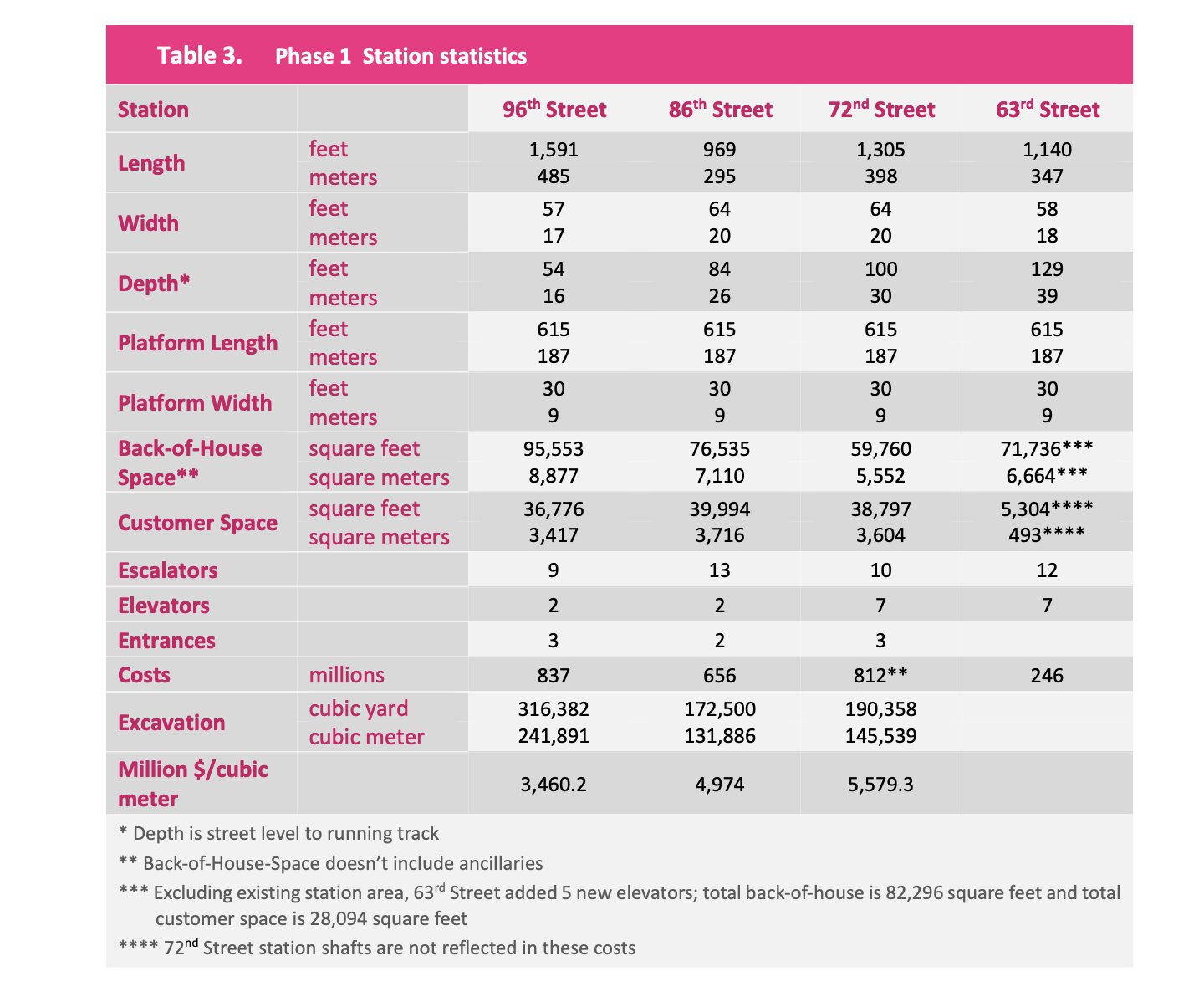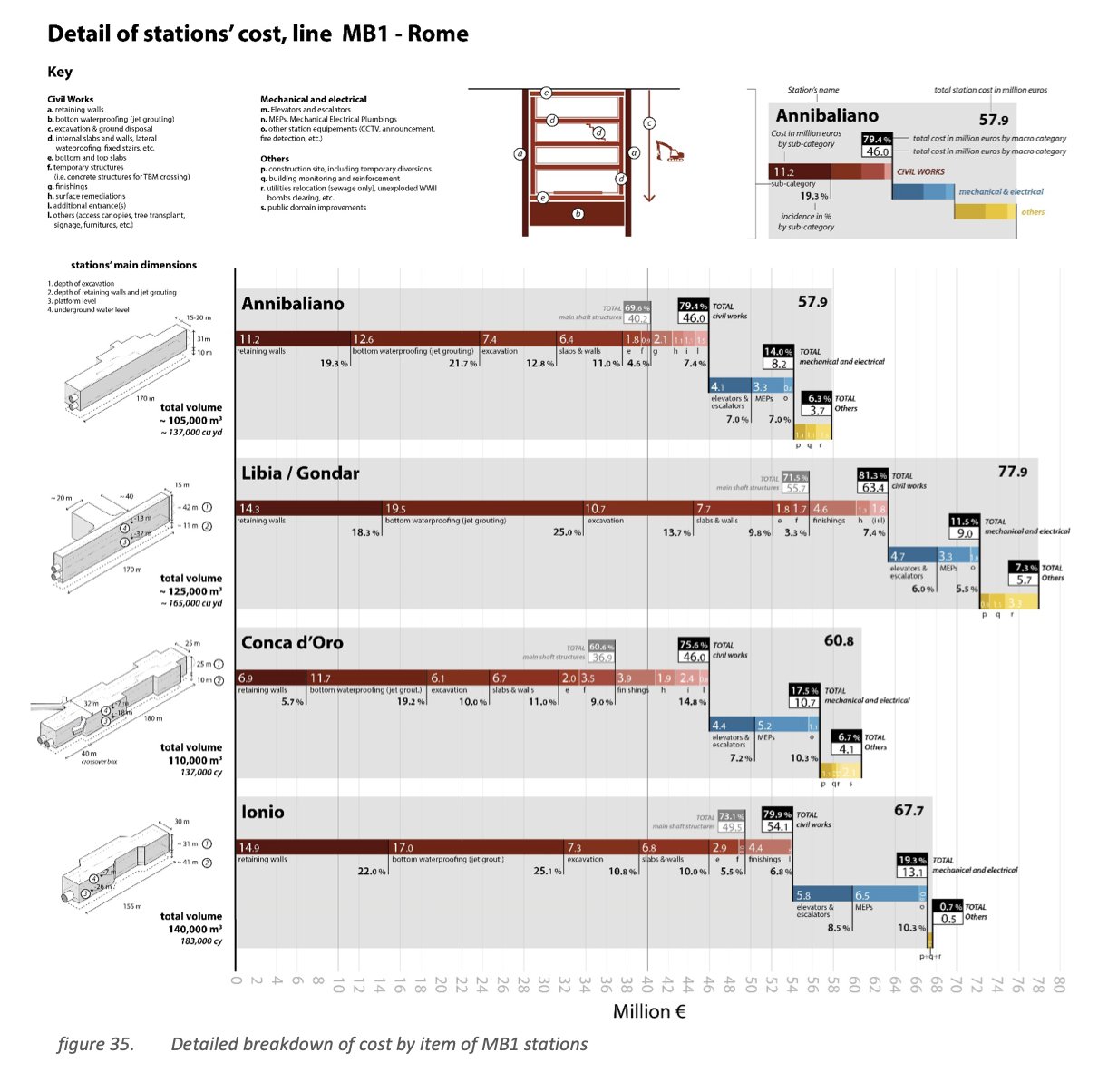Thread
Last week we published our final report re: transit costs. All of this follows from our finding (not unique) that the US pays more for transit projects than other countries in our database.
What's alarming is that on average, we build the majority of our projects at-grade, i.e. the cheapest solution, versus in tunnels, the most expensive.
We attribute these increased costs to physical structures (stations, finishes, and systems), labor, and procurement and soft costs.
We detail how stations in our Boston and New York cases made up a large share of project costs, and that they were designed beyond international norms we found in Italy, Sweden, and Turkey: more back of house space, full-length mezzanines, bespoke rather than standardized, etc.
Yes, we have higher wages. BUT, we are also less productive & overstaffed. In our GLX case, the general contractor proposed 1 supervisor for every 1.8 laborers. Internationally, this ratio is closer to 1:5. This is why some sites appear to have more people watching than doing.
Procurement and soft costs, admittedly the fuzziest factor, drives costs because of contractor markups, dealing with slow moving agencies, depending on high cost consultants, and complying with different regulations, like Buy America.
Now, we aren't all doom & gloom! We see hope in our low cost cases. In Italy, station standardization works. Stations, outside of Naples, aren't monuments. In Turkey, they have optimized station digs and use of underground space. Building shallow stations via cut & cover is key.
Metropolitana Milanese designs & manages the construction of rail projects in Milan. It also oversees the sewer system, also underground. It developed its expertise in rail and expanded its responsibilities. MM currently employs 1334 people.
In New York and Boston, we show how internal capacity has diminished over time. When GLX began, the internal team consisted of 4 to 6 managers. In New York, the in house team managing these kinds of projects has fallen from ~1600 to ~120.
Alternative project delivery can work, but not when there isn't enough agency staff to direct, oversee, and manage. In the US, we see projects caught in delays, infinite root cause studies, and changes. In Istanbul, design build is prevalent, but there's a strong leadership team.
Sweden has high cost labor, not as high as New York, but not so far off. It manages to build infrastructure cost-effectively by using a mobile, experienced work force more productively.
As more money is made available for transit projects via FTA grants, we want to see greater output. More transit miles per dollar spent. We mainly need committed leadership and public agency expertise to get things back on track.
Anyhow, it's been a thrill working with @alon_levy, @elifensari, @ChittiMarco, @AnanMaalouf, @abdirashidmd, @YaoYinan_, @JRUrbaneNetwork, @Union_Tpke, @rjdaniell, and others on this. For more check here: transitcosts.com



